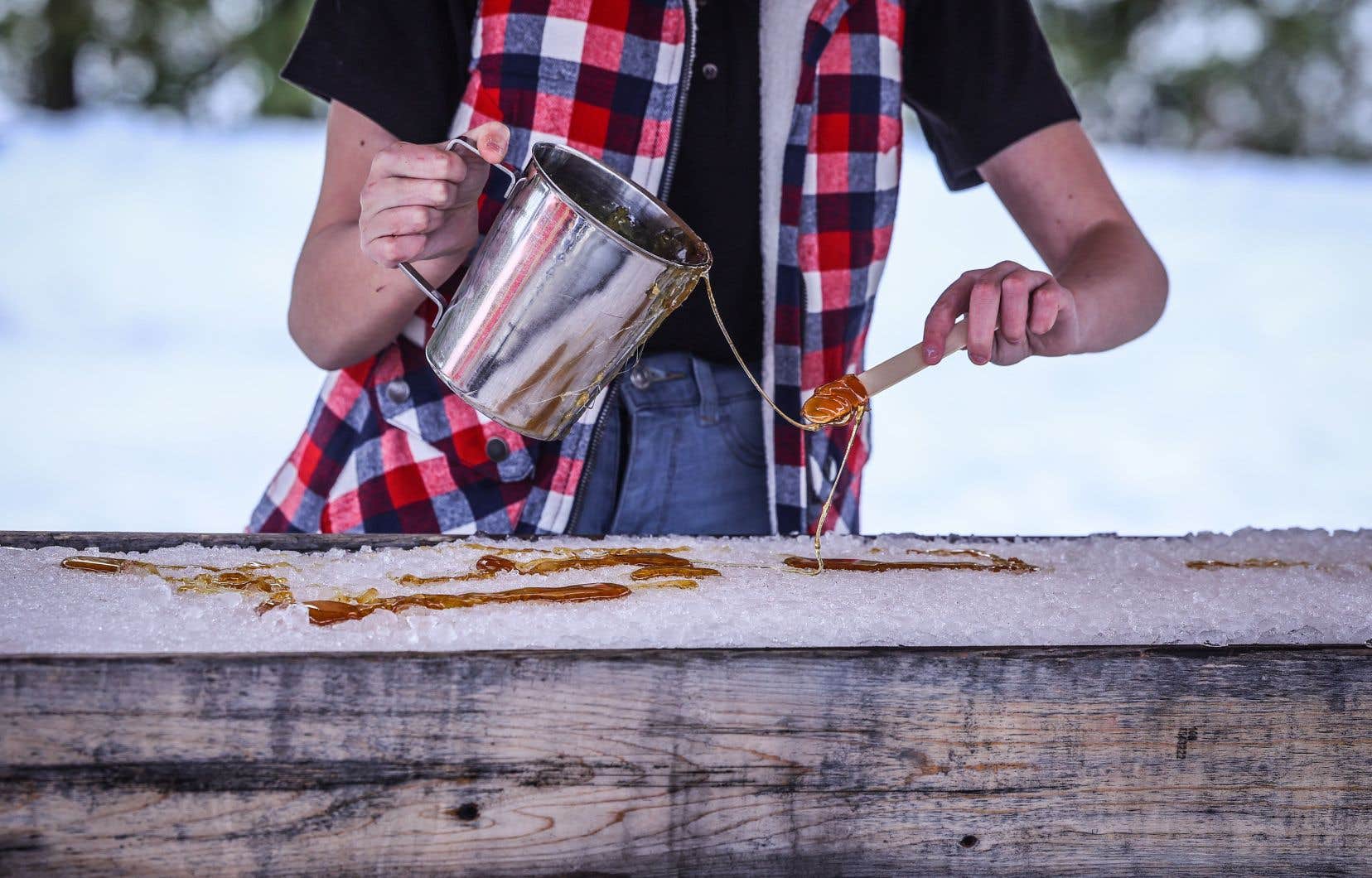Climate change will permanently disrupt maple syrup production. Researchers are working to predict their effect more accurately using climate forecasting and maple production yield models based on past climate conditions.
As part of a symposium entitled Sugar bushes in a changing environment, which took place on Monday as part of the Acfas congress, Louis Duchesne, researcher on ecosystems and the environment at the Forest Research Department of the Quebec Ministry of Forests, Wildlife and Parks, specified that it was to be expected that the casting season would be brought forward, but that in principle this delay should not affect the yield.
Over the past fifteen years that they have spent documenting the impact of climate on maple syrup production, the department’s team has found that the yield, or the amount of syrup produced by each tap, could go from 1.5 pound, the bad years to 3.5 pounds the best years. And that this interannual variability was almost exclusively explained by the climate.
The researchers were also able to determine which climatic variables influence this yield. They realized that a cold winter season promised better yields the following spring. “Cold winters are thought to cause more sugars in the trees, which act as antifreeze for cells that would otherwise burst in the cold. To protect themselves from freezing, the cells dehydrate and increase their sugar concentration,” explains Mr. Duchesne in an interview.
The researchers also found that a warmer and longer summer season preceding the following spring was also more favourable. “Since hot days favor photosynthesis and growth, it is hypothesized that there would be greater production of sugars by photosynthesis and the formation of wider tree rings and thicker sapwood during hot summers, which would lead to a better flow the following spring”, advances the forest engineer.
The other factors that the researchers highlighted influence the length of the season instead. “Spring has to be early, with high thaw temperatures in February-March to cause the flow,” says Duchesne.
“The earlier it thaws, the better the pour will be. But then, the temperatures must not warm up too soon, because too high temperatures cause the end of the flow by setting in motion the physiological processes of the tree which cause the rise of the sap, the opening of the buds and leaf development. If the beginning of spring is cold and then the heat comes early, like this year, when March was very cold and the period when it thaws during the day and freezes at night was very short, the flow is not very good,” he said.
Using mathematical models of climate conditions projected for the 2050 to 2090 horizon, and maple production yield data based on past climatic conditions, the researchers estimated what the yield would be in the future. Their results indicate that the climatic conditions conducive to the flow would occur 12 to 19 days earlier.
“The flow is expected to occur two to three weeks earlier by the end of the century. Currently, such an early start to casting, as happened in 2013, 2016 and 2018, is considered an anomaly by producers, but we believe it will become the norm. We imagine that the end of the casting will also come sooner. There would therefore be a shift in the sugaring off period. But [le réchauffement du climat] should also lengthen the growing season, which is in principle favorable,” he says.
The good news is that no drop in production is expected. “But the big producers [qui peuvent avoir de 20 000 à 25 000 entailles à faire] will probably have to cut as early as January to be ready by mid-February,” he warns.
As another speaker, Sergio Rossi, from UQAC, mentioned, the future looks relatively good for Quebec, because sugar maple is currently limited by temperature, it cannot progress to northern regions. But if the climate warms up, there is a very good chance that we will find more maples in the north. On the other hand, the United States and southwestern Quebec will suffer a little, because already, historically, they have experienced springs that are too hot and come too early, he pointed out.
The climate will change, but, on the other hand, the duration of sunshine — or the photoperiod — will not change, underlines Mr. Duchesne. Perhaps the trees have a hormonal system that tells them it’s time to sink based on such length of day? The tree will have to be physiologically adapted to these new sunshine conditions, he specifies.
“We don’t know if the photoperiod, which will be different during this earlier season, will still be favorable for casting. Will the flow also be influenced by the length of the day, there remains uncertainty on this subject. Will the maples be able to adapt to these changes? »
There is also another apprehension about the impact of climate change on the quality of the syrup. “There is little information on the impact of these changes on the taste and quality of the syrup. It is only known that when the temperatures warm up in the spring, the quality of the syrup changes, it has a taste of buds, flavor defects. It will be necessary to verify that this will not generally change the quality and taste of the syrup, or at least to anticipate it in order to be able to manage this problem, ”says Mr. Duchesne.
